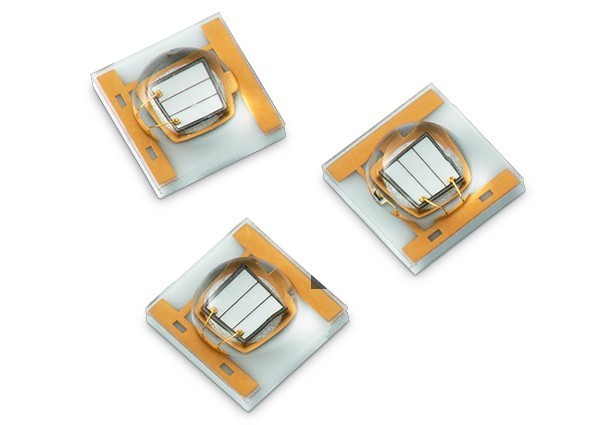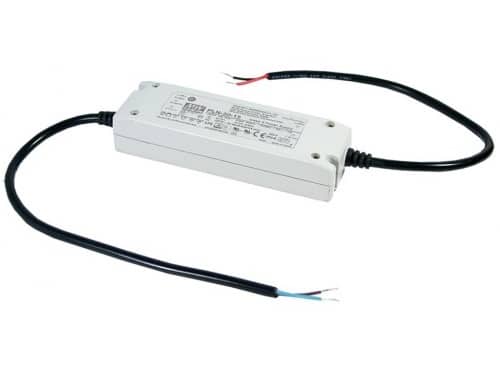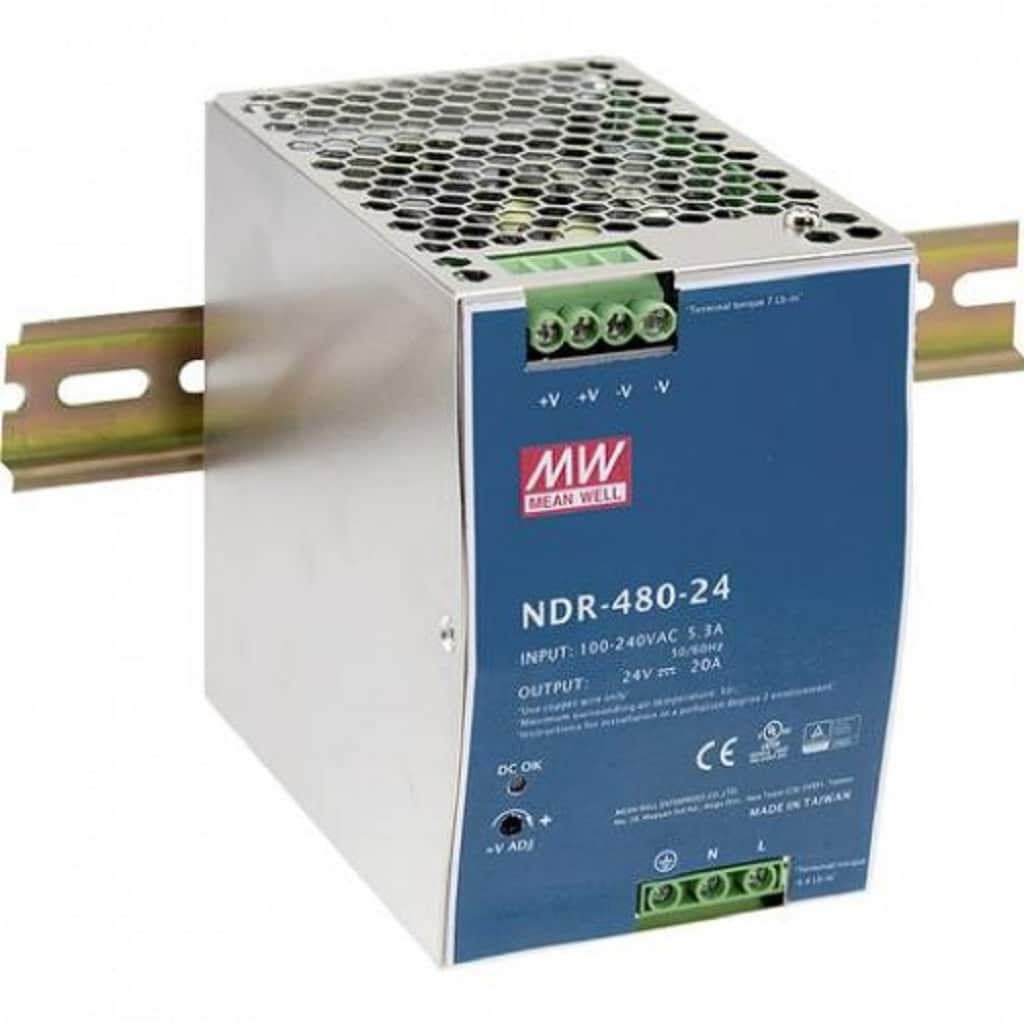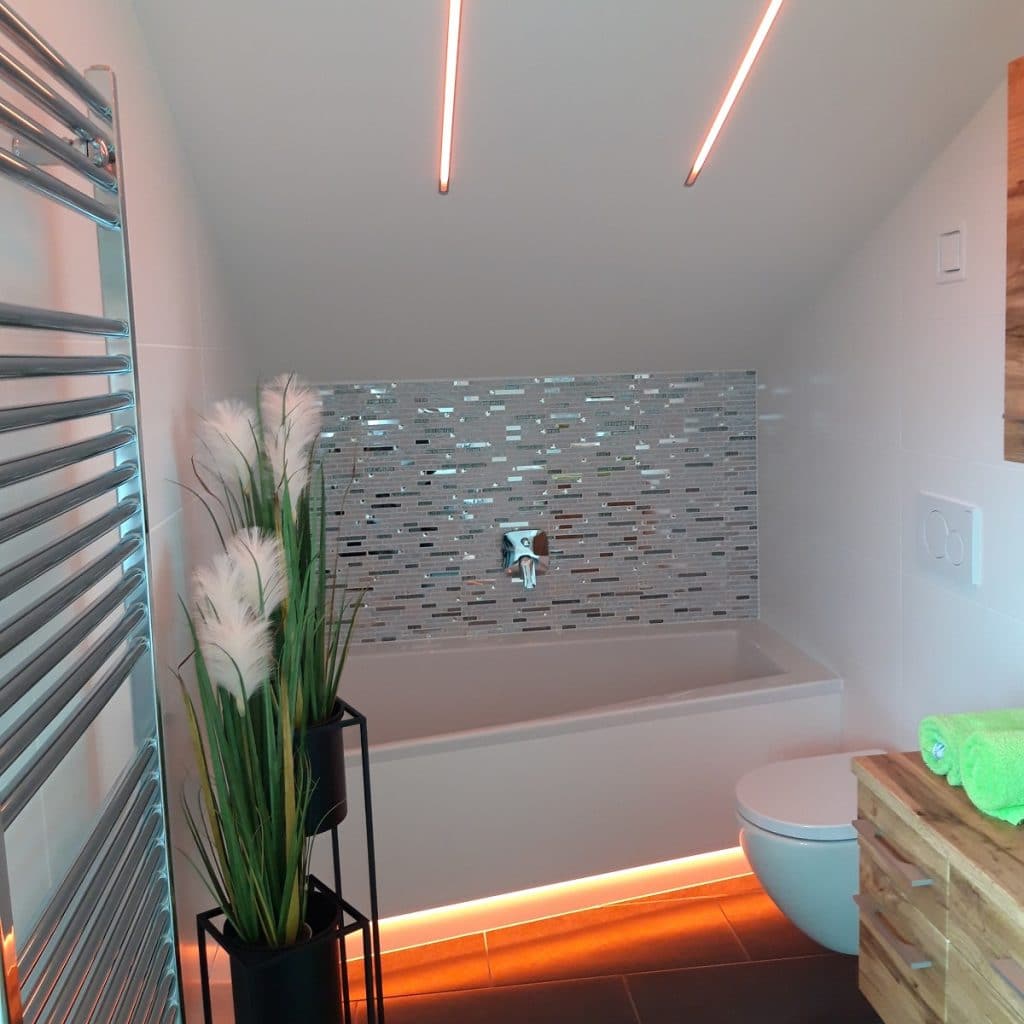It’s not that difficult to find the right power supply unit for LED strips and LED spotlights if you know what’s important! This is exactly where we want to provide support with the following article.
Let’s start with the question of what a power supply unit actually is. A power supply unit converts the voltage from the mains supply (in Europe 230Vac, AC stands for alternating voltage) for a consumer (e.g. to 24Vdc DC stands for direct voltage). Power supply units are also often referred to as transformers (short for transformer) or LED drivers (usually constant voltage).

In everyday language, there are two units that are familiar and understandable to everyone. These are voltage (U) [ unit volt] and electrical power (P) [unit watt]. We are talking about the 230V mains (socket), the 12V on-board power supply in a car, the 9V battery, …. These are all constant voltages, the current (I) [unit ampere] is set by the required power: U = P / I.
How to supply LEDs correctly?

The crux of the matter is that LEDs must be operated with a constant current. The LED forward voltage changes due to the varying current and the junction temperature. If the LEDs were now operated directly with a constant voltage, not only would it not work properly, it would definitely lead to a shortened service life or irreparable damage. For this reason, most LED spots, LED strips and COB strips (= LED strips without dots) contain a more or less complex electronic circuit that converts a constant voltage into a constant current source required by the LEDs. We have designed all our lights for constant voltage operation!
Calculate LED power supply unit: How do I choose the right power supply unit?
This means that if a product is specified with 24V, a 24V power supply unit is selected, for 12V a 12V power supply unit is selected and so on. It is important that a power supply unit with constant voltage and not constant current is selected. If this is not clear from the product name or description, a simple look at the data sheet will suffice. With constant voltage, the voltage is specified with a fixed value (e.g.: DC voltage = 24V) and the current (e.g.: current range = 0 – 5A) adapts to the power. With constant current it is exactly the opposite (e.g.: rated current = 700mA, DC voltage range = 9 -48V). Historically, LED power supplies are sometimes still referred to as LED transformers. However, since everything is now operated with constant voltage, power supply units are used instead of transformers (in addition, the efficiency is many times better). It is therefore wrong to calculate the transformer for LEDs, we calculate the LED power supply unit. This section explains how this works:

Calculate the power for the LED spotlight/LED strip power supply unit:
First, the correct voltage for the power supply unit was defined, now it’s the turn of the power. Consider how many loads(LED recessed spots, LED strips) you want to operate with one power supply unit, add up their maximum power and select the next largest power supply unit (the maximum output power is always specified on the power supply unit).
Examples:
a) 3.5m LED-Stripe-White with 14.4W/m: P = 3.5 * 14.4W = 50.4W –> Power supply unit >= 60W, e.g. PLN-60-24
b) 4 RGBW swing spots: P = 4*5W = 20W — > Power supply unit >=30W, e.g. HDR-30-24
c) above examples on one power supply + extra 10 spots : P = 3.5 * 14.4W + (10+4)*5W = 120.4W — > Power supply unit >=150W, e.g. HLG-150H-24A
Furthermore, you should not go to the power limit of the power supply unit (100% utilization leads to more power loss in the power supply unit, resulting in more heat and therefore faster ageing). The rule of thumb is usually 80%.
Speaking of more power: This does not harm the connected loads, nor is it visible on the electricity bill, as the power supply unit always adapts to the required power and therefore only supplies as much as is actually needed.
Finding the right power supply unit: What types of power supply units are there?

The roughest part is done.
Finally, you just have to decide which design to choose. If you still have space in the control cabinet for the power supply unit, then choose one with a DIN rail. This is a simple method of installation. The LED power supply unit can simply be clicked into place.
If you need a flat design because the power supply unit will be installed in the false ceiling, for example, then the drop-in housing is the right choice
What else is there?
In principle, the system becomes cheaper the more consumers are supplied with one power supply unit(more powerful power supply units are relatively cheaper). However, if there is not enough space to accommodate a large power supply unit, the total output can easily be divided between several smaller ones.
The service life of power supply units – which generally applies to electronic components – depends on the temperature. The lower the temperature, the longer the service life. For this reason, power supply units should be mounted as far away from heat sources as possible (in the control cabinet they are therefore usually mounted as far down as possible) and have sufficient air volume and circulation available for cooling.
In outdoor areas or damp rooms, it is essential to ensure a sufficient IP protection class. Other functions of high-quality power supply units include overtemperature protection and overload protection, even if these functions are not mandatory.

Finally, we would like to talk about dimmable power supply units, as there is often a misconception that you have to buy them if you want to dim your LED spotlights and LED strips using a power supply unit:
These LED power supply units are certainly justified, but are intended for special applications. In a domestic installation, the PWM dimmeroverdims the light sources and therefore this function no longer needs to be included with the power supply unit!
We welcome feedback on the article and suggestions for further articles. The easiest way to contact us is certainly our contact form. To be informed about new Knowhow articles in the future, we recommend “liking” and subscribing to our social media channels or registering for our newsletter.
